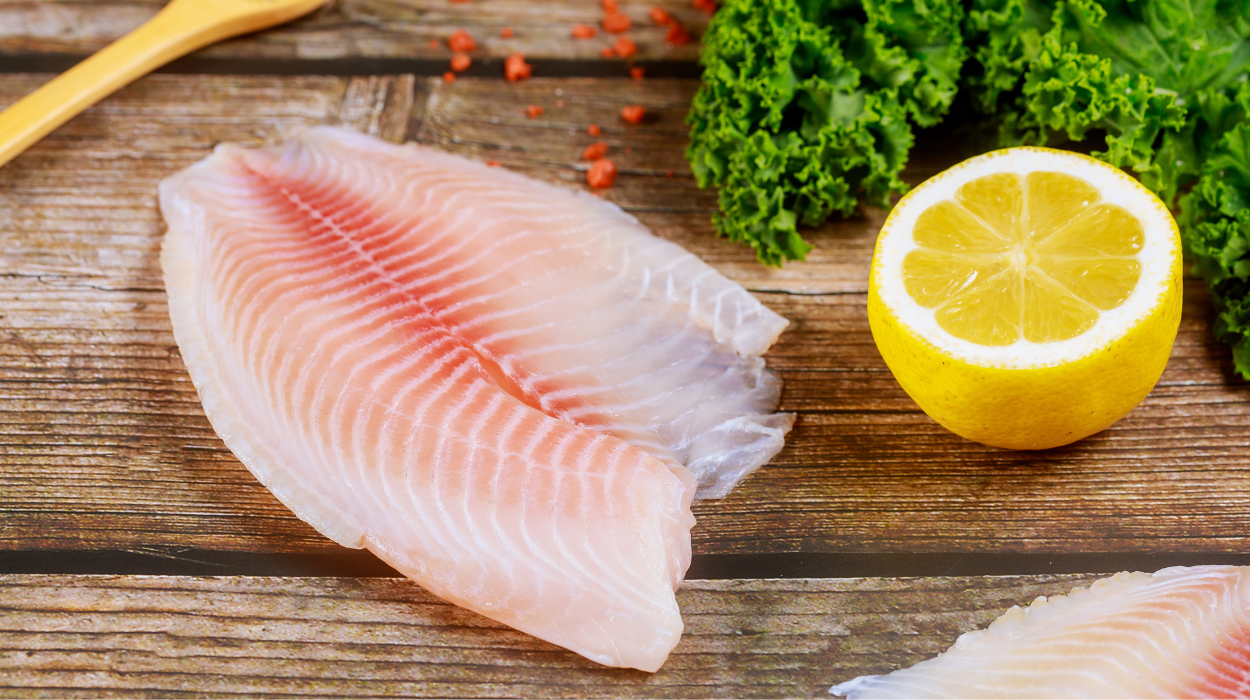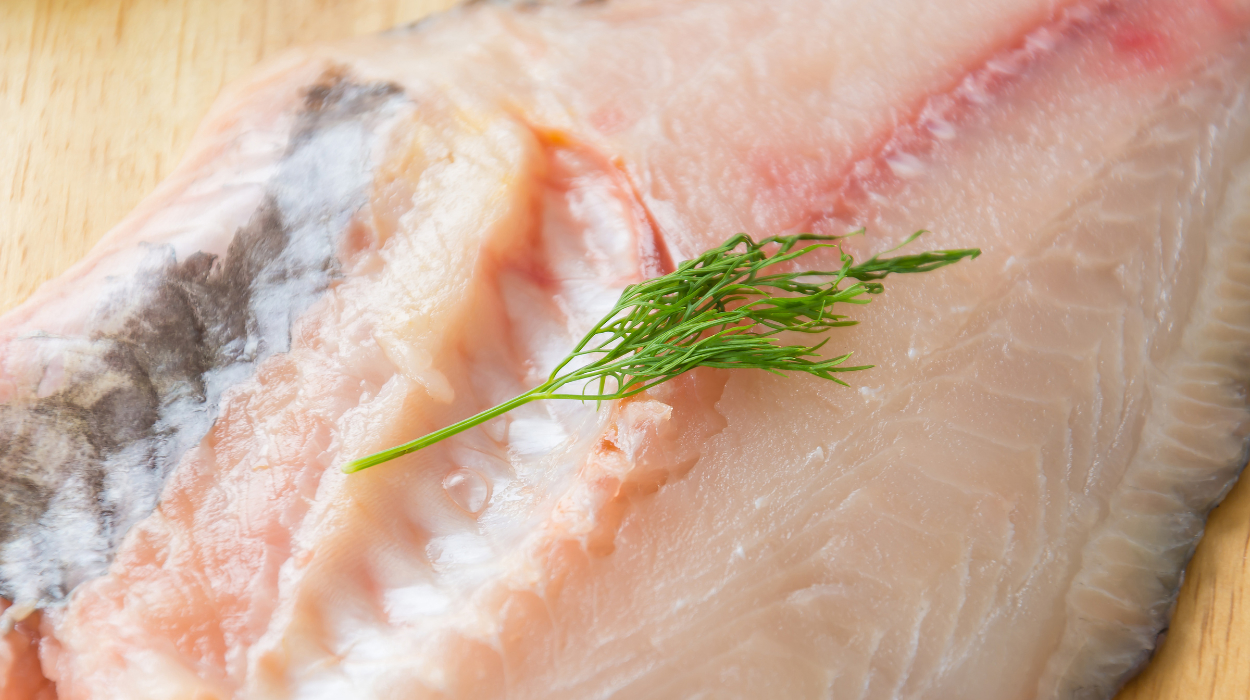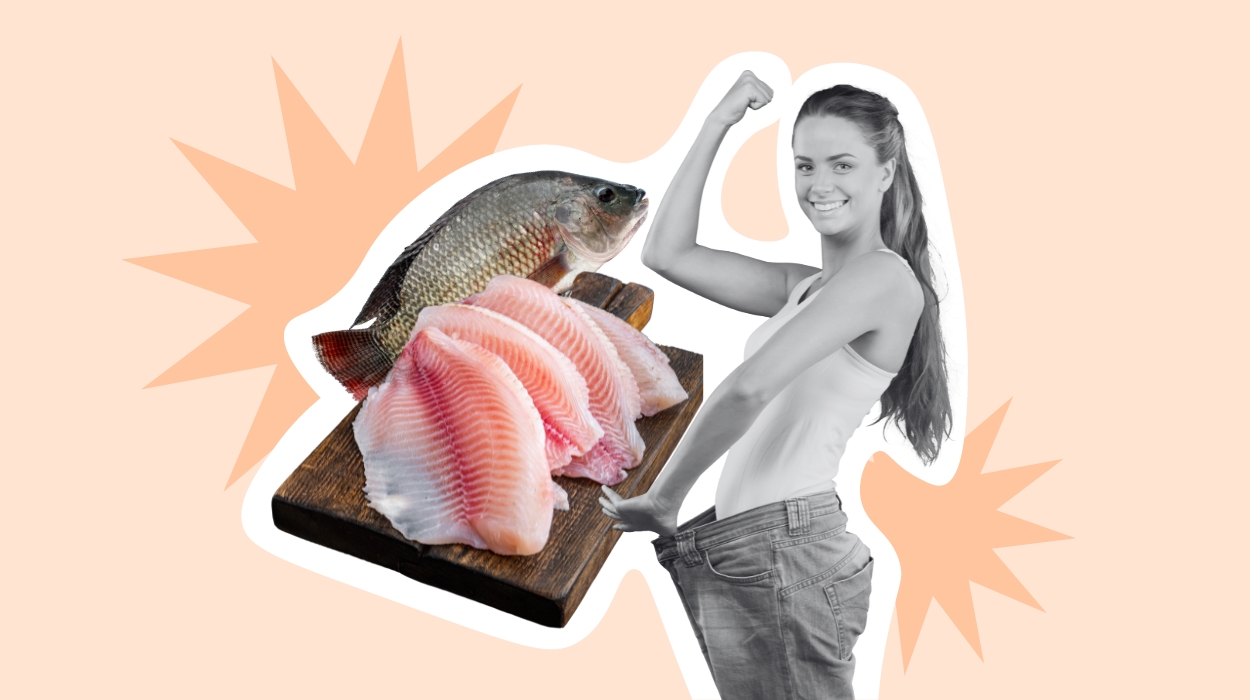Many factors come to mind when considering weight loss. A balanced lifestyle and a healthy diet are no exception. Yet, choosing which foods to include in a balanced meal can be confusing and challenging.
After all, one of the greatest joys of food is flavor, and too often, we’re asked to sacrifice flavor for health. Fortunately, fish is a healthy and delicious option often praised for its beneficial effects on human health.
We hear a lot about fatty fish like salmon and tuna, but what about tilapia? Is tilapia good for weight loss? The simple answer is yes — eating tilapia alongside other healthy foods is an excellent idea if you want to lose weight!
We’ll explore various benefits that tilapia has to offer, including its protein and fat content, ability to promote satiety between mealtimes, maintain muscle mass, and abundance of vitamins and minerals.
Is Tilapia Good For Losing Weight?
Tilapia is a great addition to a diet that promotes long-term, sustainable weight loss! Pairing tilapia with high-fiber foods like vegetables and whole grains promotes satiating meals that make you less likely to graze on snacks throughout the day.
Tilapia is a high-quality protein source that can promote the maintenance and development of muscle mass.
It is rich in essential vitamins and minerals, like vitamin B12 & selenium, that promote a powerful immune system, bone health, and a thriving metabolism.
Is Tilapia Good For Weight Loss?

Tilapia[1] is a wonderful addition to a weight-loss diet at only 160 calories per serving. Due to its extremely high protein content, low-calorie density, and abundance of vitamins and minerals, this fish can help promote weight loss in many ways.
Tilapia Helps Promote Satiety
Building plates rich in healthy foods, especially those high in fiber[2] and protein,[3] support consistent energy throughout the day. It also keeps us satiated, decreasing our likelihood of snacking too much between meals. This ultimately makes achieving a calorie deficit more attainable.
Thankfully, tilapia packs an impressive 25 grams of protein per 100 grams or about 3.5 ounces. The same serving size of tilapia also only provides about 7 grams of fat — the majority of which is monounsaturated — making tilapia a great high-protein, low-saturated fat option.
Pairing tilapia nutrition with fiber-rich vegetables and whole grains makes for a delicious, satiating meal that won’t leave you feeling hungry. Remember, eating to stay in a calorie deficit should be sustainable and nourishing!
Tilapia Promotes Muscle Growth
Ideally, weight should be lost in the form of fat mass. However, several studies[4] have found that weight loss in the form of skeletal muscle can occur alongside fat loss. It’s important to maintain as much muscle mass as possible, as it is essential for bone health, weight management, and a healthy metabolism.
Strength training regularly and maintaining a high protein intake is one way to promote muscle mass maintenance and growth. Fortunately, tilapia’s high protein content makes it a great addition to your diet, especially if you want to maintain or increase muscle mass.
Tilapia Compared To Other Animal Proteins
Another benefit of tilapia is its low-calorie content and presence of omega-3 fatty acids. It offers similar or higher amounts of protein and fewer calories than other fish. It also offers healthy fats, and it doesn’t contain hazardous levels[5] of mercury, which other fatty fish choices may have.
For example, a 100-gram serving (about 3.5 ounces) of ground beef[6] has roughly 28 grams of protein but offers 256 calories. It also provides about 15 grams of fat, over two times the amount of fat found in tilapia, with over 33% of its saturated fat. The same serving size of cooked tilapia[1] offers 25 grams of protein and about 160 calories.
You might wonder, “Is tilapia fattening?” and the answer is no. Most of the fats in tilapia are monounsaturated, which are fats known to be thermogenic,[7] increasing the metabolic rate and facilitating calorie burn.
Tilapia is also an excellent source of essential fatty acids, like omega-3s. A 100-gram serving[1] (about 3.5 ounces) provides about 190 milligrams of omega-3s.
Ground beef and tilapia can both have their place in a balanced diet. Each protein offers unique health benefits. However, tilapia might be a better choice if you want to decrease your calorie and fat intake while promoting heart health.
Tilapia Is Abundant In Vitamins And Minerals
Its wide variety of essential minerals and vitamins sets tilapia apart from other fish. Tilapia is an excellent source of Vitamin B12, niacin, selenium, choline, and more!
- Selenium:[8] Tilapia is exceptionally high in selenium, offering up to 94% of the Daily Value for adults. Selenium is important for healthy thyroid function,[9] metabolism, and DNA synthesis.
- Vitamin D:[10] Our body makes vitamin D when our skin is exposed to sunlight. However, many people are not getting enough sun exposure for adequate amounts or are living in a geographical region that gets inadequate sunlight.
Tilapia can provide up to 25% of the DV for people ages 1-70 years. This vitamin promotes a healthy immune system, protects bone health, and prevents osteoarthritis.
- Vitamin B12:[11] Vitamin B12 is only found in animal products. Getting enough B12 decreases your risk for megaloblastic anemia and supports a healthy nervous system. Tilapia provides close to 75% of the adult’s DV for vitamin B12.
The Nutritional Value Of Tilapia
So, “Is tilapia good for losing weight?” According to USDA, a 100-gram (about 3.5 ounces) filet[1] of baked tilapia provides
Calories: 160
Protein: 25 grams
Fat: 6.65 grams
Calcium: 13 mg
Choline: 53.2 mg
Magnesium: 34 mg
Niacin: 4.85 mg
Sodium: 280 mg
Selenium: 51.9 mcg — 94% of the DV
Vitamin B12: 1.77 mcg — 73.75% of the DV
Vitamin D: 3.9 mcg — 26% of the DV
How To Make And Eat Tilapia For Weight Loss

You’ll be glad to hear that eating tilapia is not only good for you, it’s tasty too! This versatile fish can be served in a variety of ways. All you need to transform tilapia into a delicious and satisfying dish are a few simple ingredients.
Baked Sheet Pan Tilapia With Roasted Vegetables
This is a great option for weeknights! Since tilapia tends to have a milder flavor, we recommend seasoning it with extra virgin olive oil, fresh herbs, and a squeeze of lemon juice. What’s more, you can roast vegetables of your choosing on the same sheet pan; just; be sure to cut them to a similar size so the bake time is roughly the same.
Fish Tacos
Flaky white fish is the perfect option for fish tacos! You’ll want to season your tilapia with spices like cumin, cayenne, salt, and pepper to make these. Then bake or broil it until it’s crispy. These fish tacos are great with corn tortillas, mango salsa, a crunchy cabbage slaw, and a squeeze of lime!
Blackened Tilapia
The key to this recipe is seasoning your fish with cajun seasoning and pan-frying each filet until they become dark golden brown. Consider pairing this with a bed of leafy greens and brown rice for a well-rounded meal!
Conclusion
With so much information at our fingertips, choosing which foods to include in a nutritious diet can be confusing. Focusing on building nourishing meals that are well-balanced and feel satisfying to you is a key component to your well-being.
Thankfully, you can rest assured that tilapia is an excellent addition to a healthy, low-calorie diet. Thanks to its high protein content, this fish can help promote satiety and boost muscle mass maintenance when it’s paired with a regular exercise regimen and other health-promoting foods.
Consider adding tilapia to your weekly meal rotation next time you’re looking for a new protein to add to your diet! Remember, you can cook tilapia in a variety of ways to find what’s right for you!
Frequently Asked Questions
Tilapia is a healthy high-protein meat to include in your diet if you want to lose weight. It is high in monounsaturated fats and essential nutrients and low in calories.
Tilapia provides a significant portion of the daily value for various nutrients and is low in calories and high in protein, making it a very healthy fish to include in your diet.
The FDA[12] and Dietary Guidelines for Americans[13] recommend that adults eat two to three servings of cooked fish per week, or about 8 to 12 ounces. A typical serving of fish is about 4 ounces.
The FDA considers tilapia among one of the Best Choices of fish to include in your diet based on its low mercury levels. One study[5] on tilapia in the U.S. found mercury levels to be safe.
 Evidence Based
Evidence Based